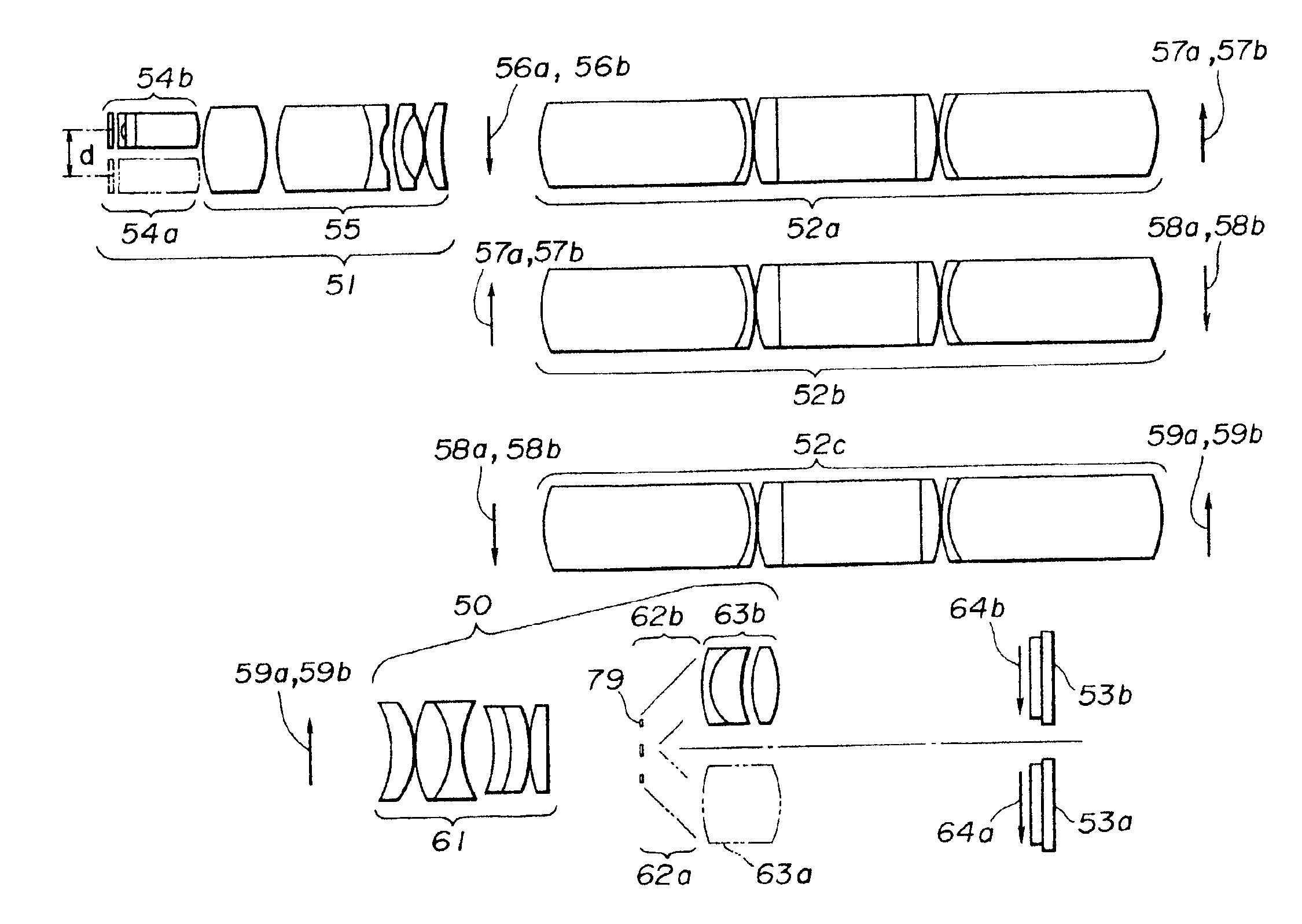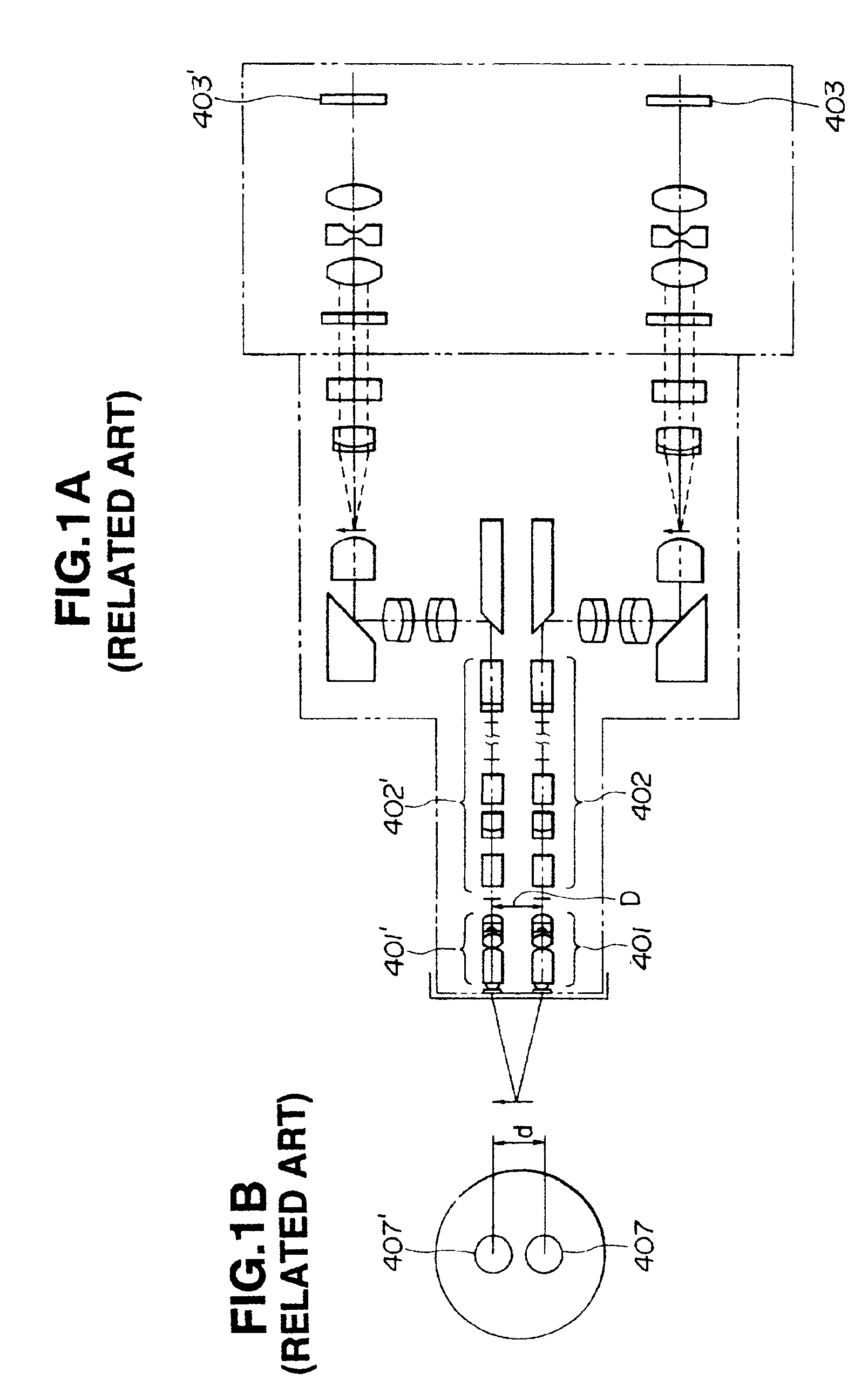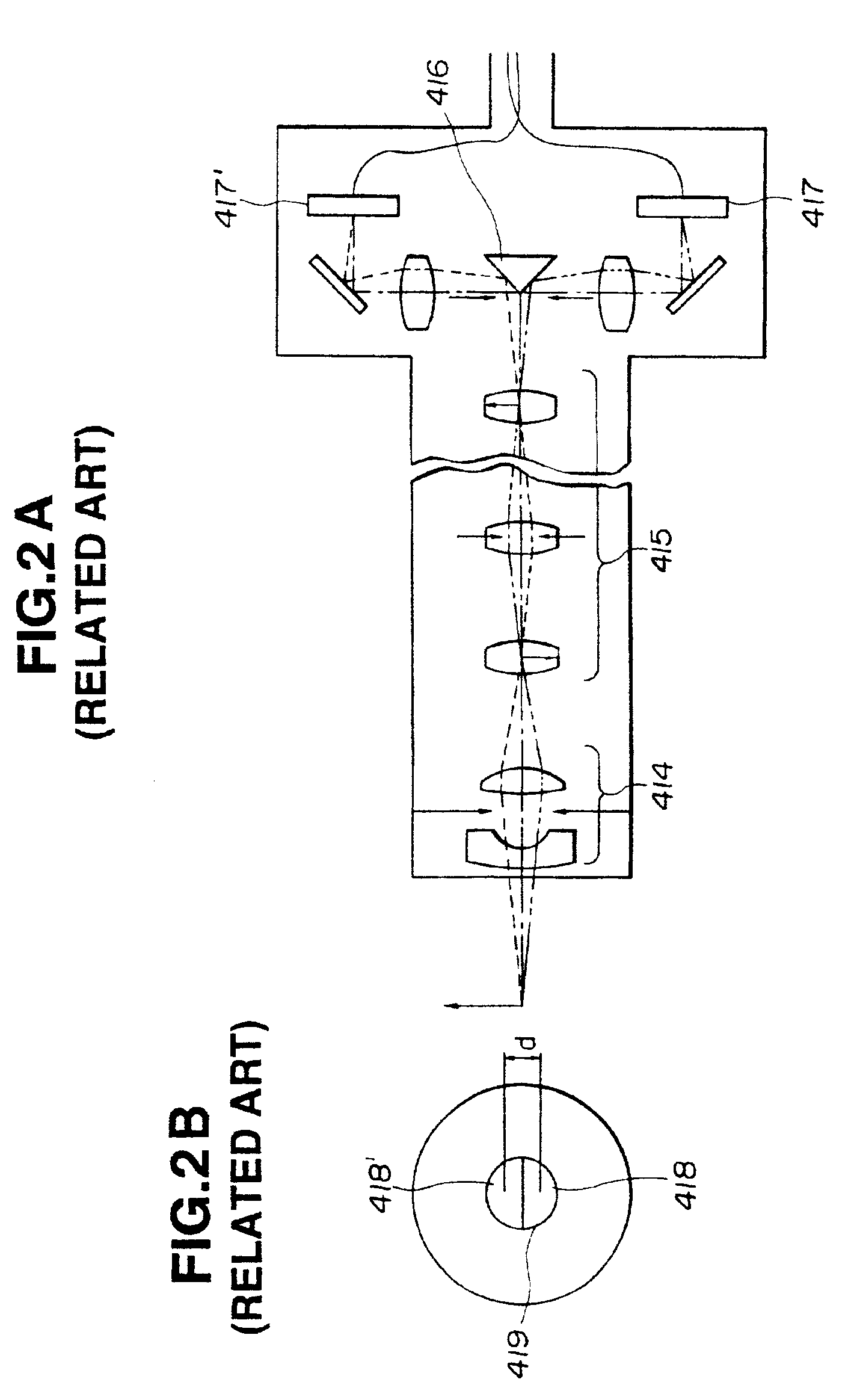Stereoendoscope wherein images having passed through plural incident pupils are transmitted by common relay optical systems
a relay optical system and endoscope technology, applied in the field of endoscopes, can solve the problems of large magnification difference between the right and left images, large focusing position, and large respective parts
- Summary
- Abstract
- Description
- Claims
- Application Information
AI Technical Summary
Benefits of technology
Problems solved by technology
Method used
Image
Examples
first embodiment
[0107]As shown in FIG. 5, a stereoendoscope apparatus 1 comprises a stereoendoscope 2 of the first embodiment having an image taking optical system for stereo-inspection built-in, a light source apparatus 3 feeding an illuminating light to an illuminating light transmitting means provided in this stereoendoscope to transmit the illuminating light, a camera controlling unit (abbreviated as a CCU hereinafter) 4 processing signals for an image taking means built-in in this stereoendoscope 2, a scan converter 5 converting the signal from this CCU 4 to a video signal, a color monitor 6 displaying the video signal put out of this scan converter 5 and shutter spectacles 27 having a shutter function for stereo-inspecting the image displayed in this color monitor 6.
[0108]The stereoendoscope 2 has an elongate inserted section 11 to be inserted into a body cavity or the like and a gripped section formed to be large in the diameter at the proximal end of this inserted section so as to be grippe...
second embodiment
[0155]The stereoendoscope apparatus provided with this second embodiment can be realized in substantially the same formation as of the stereoendoscope apparatus 1 in FIG. 5.
[0156]This second embodiment has an advantage that the image taking devices 23a and 23b can be focused respectively independently. If they are precisely adjusted, an image higher in the quality than in the case of a common image taking device 23 will be able to be made.
[0157]Also, the parallax can be made variable the same as in the first embodiment. However, this embodiment has an advantage that, when the left and right image taking devices 23a and 23b are moved as operatively connected with the movement of the objective optical systems 21a and 21b, the movement will not be restricted to be within the image taking range in the case of the common image taking device 23.
[0158]That is to say, in the first embodiment, as the image taking device 23 is common, the moving range of the left and right images 10a and 10b ...
third embodiment
[0164]Therefore, in the third embodiment, as shown in FIG. 9, the light receiving surface is arranged as inclined in conformity with the contact surface of the curved image surface. In FIG. 9, the light receiving surface is inclined by 25.332 degrees to the surface vertical to the optical axis of the relay lens system 22c.
[0165]According to this third embodiment, not only the effects of the second embodiment are retained but also a picture image having little curvature aberration is obtained. By the way, the lens data of the third embodiment are as in Table 2.
[0166]By the way, as the petzval sum of the relay lens systems 22a, 22b and 22c is a positive value, the petzval sum of the objective optical systems 21a and 21b may be made a negative value to control the image surface curvature aberration of the final images 10a and 10b having passed through the relay lens system 22c.
[0167]FIGS. 10A and 10B are of modifications showing this manner.
[0168]As shown in FIG. 10A, the petzval sum...
PUM
 Login to View More
Login to View More Abstract
Description
Claims
Application Information
 Login to View More
Login to View More - R&D
- Intellectual Property
- Life Sciences
- Materials
- Tech Scout
- Unparalleled Data Quality
- Higher Quality Content
- 60% Fewer Hallucinations
Browse by: Latest US Patents, China's latest patents, Technical Efficacy Thesaurus, Application Domain, Technology Topic, Popular Technical Reports.
© 2025 PatSnap. All rights reserved.Legal|Privacy policy|Modern Slavery Act Transparency Statement|Sitemap|About US| Contact US: help@patsnap.com



